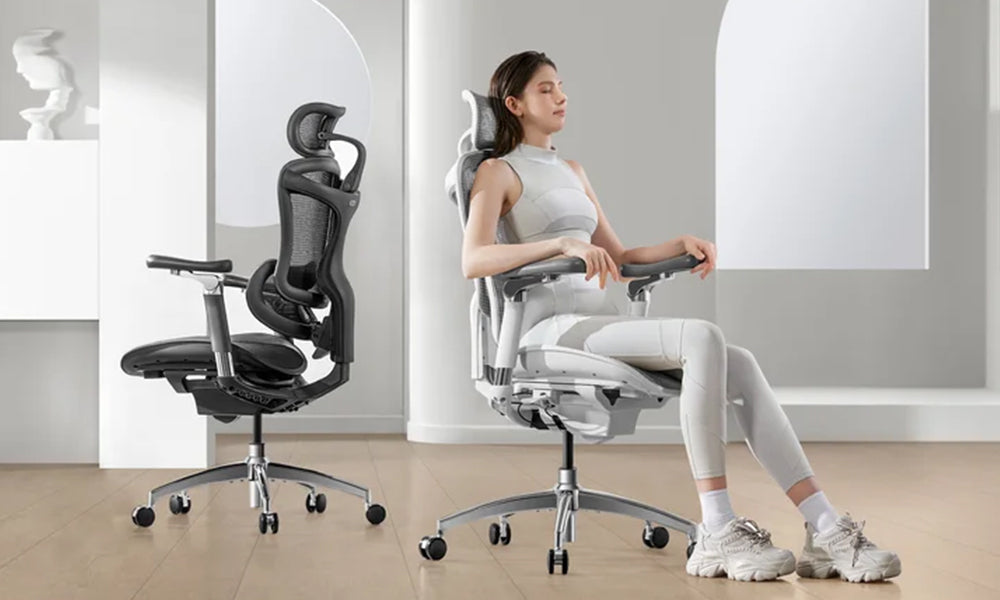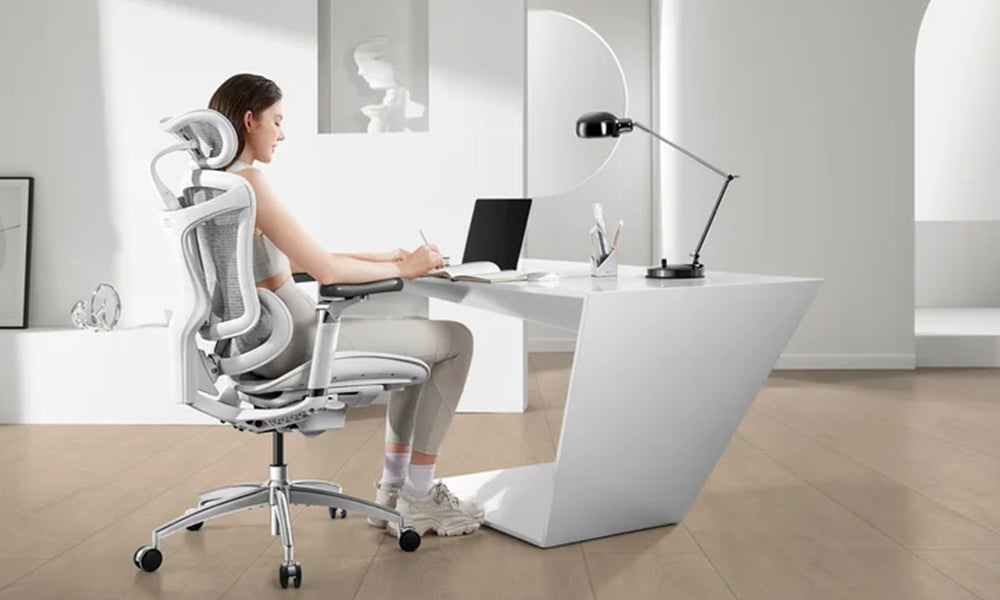In the fast-paced world of today, many of us spend a significant portion of our lives sitting at desks while working on computers. Whether it's in an office setting, a home office, or a co-working space, the importance of having a comfortable and supportive chair cannot be overstated. This is where ergonomic office chairs come into play. In this article, we will delve into the world of ergonomic office chairs, exploring what they are, why they matter, and how they can significantly impact our comfort and productivity.
Understanding Ergonomics
Before we dive into the specifics of ergonomic office chair, let's first understand what ergonomics is all about. Ergonomics is the science of designing and arranging objects to interact with humans in ways that maximize comfort, efficiency, and safety. In the context of office furniture, including chairs, ergonomics focuses on creating products that adapt to the natural movements and postures of the human body, thus reducing strain and discomfort.
What is an Ergonomic Office Chair?
An ergonomic office chair is designed with the user's comfort and well-being in mind. Unlike traditional chairs, which often have a one-size-fits-all approach, ergonomic chairs are customizable and adjustable to accommodate various body types and work habits. These chairs are engineered to provide proper support to key areas of the body, including the spine, neck, shoulders, and hips. They aim to promote good posture, reduce the risk of musculoskeletal disorders, and enhance overall productivity.
Features of an Ergonomic Office Chair
Adjustability: One of the defining features of ergonomic office chairs is their high degree of adjustability. Users can typically modify the height, seat depth, backrest angle, armrest height, and lumbar support to suit their individual preferences and needs.
Lumbar Support: The lumbar region, or the lower back, is particularly susceptible to strain when sitting for prolonged periods. Ergonomic chairs often come with built-in lumbar support, a contoured area in the lower back region that helps maintain the natural curve of the spine.
Seat Design: Ergonomic chairs have a contoured or cushioned seat that helps distribute body weight evenly. Some designs also feature a waterfall edge, which reduces pressure on the back of the thighs and promotes healthy blood circulation.
Adjustable Armrests: Armrests provide support to the arms and shoulders, reducing strain on the neck and upper body. Ergonomic chairs allow users to adjust the height and width of the armrests for personalized comfort.
Swivel and Casters: The ability to swivel and move easily is another important aspect of ergonomic chairs. This feature enables users to reach different areas of their workspace without straining or twisting their bodies.
Breathable Materials: Many ergonomic chairs are designed using breathable materials that prevent heat buildup and keep the user comfortable during extended periods of sitting.
Headrest: Some advanced ergonomic chairs come with a headrest that supports the neck and head, especially during moments of relaxation or brief breaks.
Why Do Ergonomic Office Chairs Matter?
1. Improved Comfort
Comfort is perhaps the most obvious benefit of ergonomic chairs. These chairs are meticulously designed to provide optimal support to the body's natural contours. As a result, users can work for longer periods without experiencing discomfort, stiffness, or pain.
2. Enhanced Posture
Poor posture is a common issue among those who spend extended hours at a desk. Slouching or hunching over a computer can lead to a range of health problems, including back pain, neck strain, and even headaches. Ergonomic office chairs encourage proper posture by supporting the spine's natural curvature and aligning the body correctly.
3. Reduced Risk of Musculoskeletal Disorders
Sitting in an unsupportive chair for prolonged periods can lead to musculoskeletal disorders such as carpal tunnel syndrome, lower back pain, and neck strain. Ergonomic chairs are designed to mitigate these risks by providing the necessary support and promoting healthy sitting habits.
4. Increased Productivity
When individuals are comfortable, they can focus better on their tasks. Ergonomic office chairs can contribute to increased productivity by allowing users to concentrate on their work without the distraction of discomfort or pain.
5. Prevention of Health Issues
The health implications of prolonged sitting have gained attention in recent years. Ergonomic chairs play a role in combating these issues by encouraging movement, proper circulation, and reducing pressure on critical body areas.
Choosing the Right Ergonomic Office Chair
Selecting the right ergonomic office chair can make a significant difference in your comfort and well-being. Here are some factors to consider when choosing the perfect chair for your workspace:
Adjustability: Look for a chair that offers a wide range of adjustments. These adjustments should include seat height, armrest height and width, backrest angle, and lumbar support.
Lumbar Support: Ensure the chair has adequate lumbar support that fits the natural curve of your lower back. This helps maintain proper spinal alignment.
Seat Depth and Width: The seat should be deep enough to support your thighs without causing pressure at the back of your knees. The width of the seat should also allow you to sit comfortably without feeling restricted.
Material and Cushioning: Opt for breathable materials that keep you cool and comfortable. The cushioning should be firm enough to provide support without being too hard.
Swivel and Casters: Check if the chair swivels easily and has smooth-rolling casters. This allows you to move and reach different areas of your workspace without straining.
Armrests: Adjustable armrests are essential to prevent strain on your shoulders and neck. They should be positioned so that your arms rest comfortably while your shoulders remain relaxed.
Headrest (Optional): If you prefer extra neck and head support, consider a chair with an adjustable headrest.
Budget: While ergonomic chairs can be an investment, they are worth the cost considering the long-term benefits they provide. Set a budget and look for options that meet your requirements within that range.
Trial and Warranty: If possible, try out the chair before purchasing it. Additionally, check the warranty to ensure you're covered in case of any defects or issues.
Conclusion
In a world where technology keeps us tethered to our desks for extended periods, the significance of a comfortable and supportive chair cannot be overstated. Ergonomic office chairs offer a solution to the discomfort and health risks associated with prolonged sitting. By promoting good posture, reducing the risk of musculoskeletal disorders, and enhancing overall comfort, these chairs pave the way for increased productivity and well-being in the workplace.
When choosing an ergonomic office chair, prioritize features such as adjustability, lumbar support, seat design, and material quality. Investing in a high-quality ergonomic chair is an investment in your health and work performance, ensuring that you can tackle your tasks with focus, comfort, and confidence. So, whether you're a professional, a freelancer, or a remote worker, make the switch to an ergonomic office chair and experience the positive transformation it brings to your work life.



